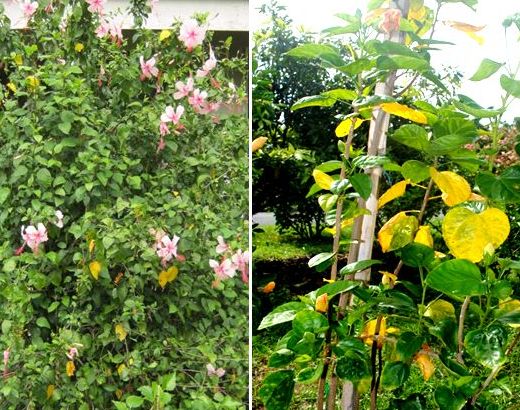VOLUME 5 NUMBER 2 (July to December 2012)

Philipp. Sci. Lett. 2012 5 (2) 158-168
available online: October 25, 2012
*Corresponding author
Email Address: cbpascual22@yahoo.com; magdalitapm@yahoo.com
Submitted: January 17, 2012
Revised: June 25, 2012
Accepted: July 22, 2012
ARTICLE
Disease Identification and In situScreening of Gumamela (Hibiscusrosa-sinensis Linn) Germplasm andHybrids to Leaf Anthracnose forDisease Resistance Breeding
by Cecilia B. Pascual* and Pablito M. Magdalita*
Crop Science Cluster and Institute of Plant Breeding,
College of Agriculture, University of the Philippines
Los Baños, 4031 College, Laguna, Philippines
College of Agriculture, University of the Philippines
Los Baños, 4031 College, Laguna, Philippines
Hibiscus germplasm and hybrids planted at theCrop Science Cluster - Institute of PlantBreeding (CSC-IPB) breeding blocks have beenobserved to be affected by a few diseases. Theidentification of these diseases and their causalorganism plus the identification of natural sources of resistanceis crucial for the breeding program. The diseases that wereidentified included the following: a) anthracnose, commonlyknown as the leaf spot disease caused by Colletotrichumgloeosporoides Penz., b) early wilt and die-back attributed toFusarium oxysporum Schlect, c) stem rot at the base of the plant,wilting and blighting of the plant caused by Rhizoctonia solaniKuhn. All fungal isolates demonstrated pathogenicity tohibiscus. Out of the 36 hibiscus genotypes evaluated in situ, 12showed less than 10% average of the leaf area infected for leafanthracnose. In contrast, two Hibiscus species namely: Hibiscuscooperri and H. schizopetalus, two hybrids namely: H. rosasinensis'Perla Santos Ocampo' x H. rosa-sinensis 'Loren B.Legarda' and H. rosa-sinensis 'Gelia T. Castillo' x H. rosasinensis'Betty Go-Belmonte' including three other varieties like'Reddy or Not', 'Wilcox' and 'Petite Peach' were not infected bythe leafspot disease or anthracnose under field conditions, whichsuggests that they could have some form of resistance to thisdisease. This further suggests that the resistant related speciesespecially H. cooperri having red and white variegated leavescould be used for hybridization with the susceptible varieties todevelop a variety with a dual purpose trait, i.e. resistant to thefungus and leaves with variegations as another ornamental traitof the hybrid variety.
© 2024 SciEnggJ
Philippine-American Academy of Science and Engineering